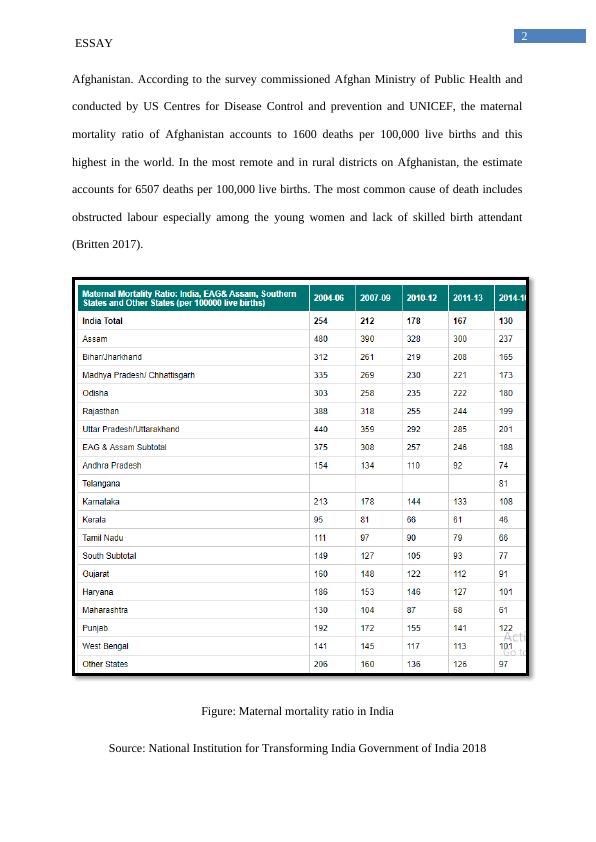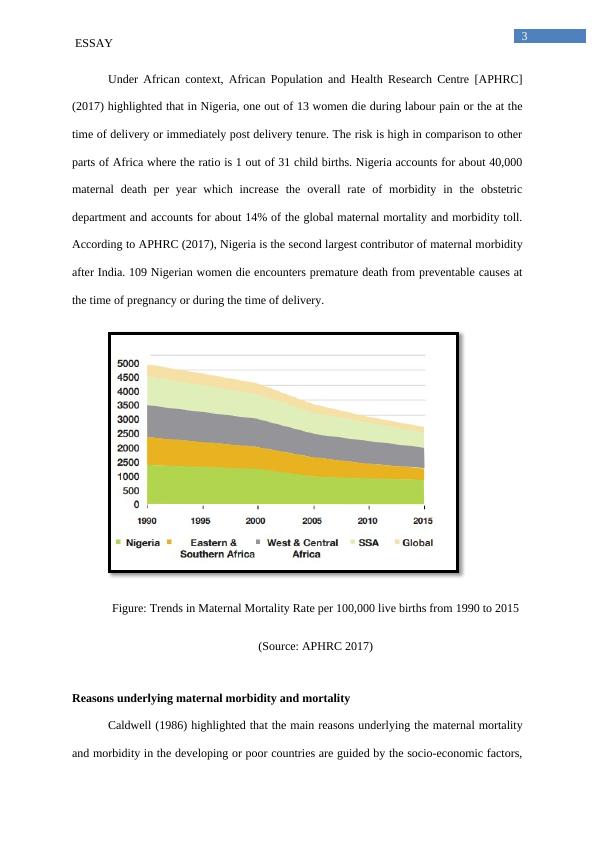Maternal Mortality and Morbidity in Developing Countries: Factors and Strategies
Organising thoughts into a coherent piece of writing is important in academic life. This assignment requires writing an essay with an introduction, body, and conclusion. The essay requirements vary depending on the subject, and the expected format and referencing style can be found in the course book.
14 Pages3451 Words61 Views
Added on 2023-06-04
About This Document
This essay provides an overview of the statistics of maternal mortality and morbidity in developing countries and discusses the factors associated with it. It also suggests strategies to address these problems, such as increasing the level of literacy among expecting mothers, improving healthcare access and awareness, and reducing child marriage. The essay highlights the need for investments, interventions, and enabling policies to achieve the Millennium Development Goals.
Maternal Mortality and Morbidity in Developing Countries: Factors and Strategies
Organising thoughts into a coherent piece of writing is important in academic life. This assignment requires writing an essay with an introduction, body, and conclusion. The essay requirements vary depending on the subject, and the expected format and referencing style can be found in the course book.
Added on 2023-06-04
ShareRelated Documents
End of preview
Want to access all the pages? Upload your documents or become a member.
Community Intervention to Improve Skilled Birth Attendance
|5
|1162
|19
Assignment on Sustainable Development Goal
|22
|5891
|169
Assignment | Maternal and Neonatal Mortality
|8
|3438
|17
Global Maternal Health
|14
|3370
|47
Mortality Rate and Pregnancy in Sierra Leone
|5
|1215
|74
HAS 911: Contemporary Public Health Issues
|14
|3623
|195




